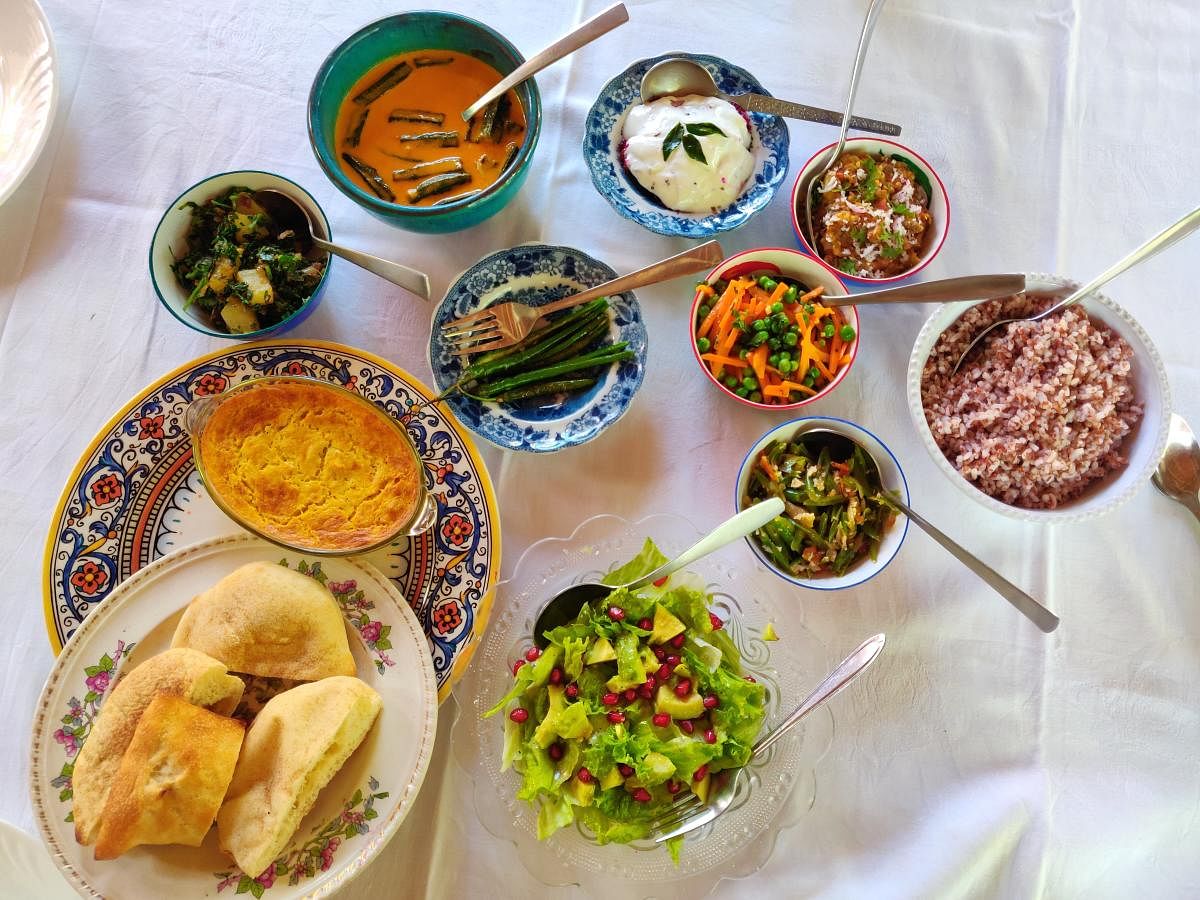
On all my earlier trips to Goa, my experience with food could have only been described as basic, sustenance level. What about Goa’s famous Portuguese flavours and fresh seafood, you ask? As a vegetarian, it seemed like all of the state’s local cuisine was out of my reach, which was why I usually ended up eating desi-global stuff — the predictable gamut from paneer to pizza —at hotel restaurants or hipster cafés.
This time around, I had no reason to look forward to anything different. And so, I found myself pleasantly surprised, even supremely delighted when Chef Sarita welcomed me at Tempero with a warm smile and a menu that contained a wide repertoire of vegetarian dishes. At Tempero Restaurant (meaning ‘seasoning’ in Portuguese) at the newly opened ITC Grand Goa in the quiet Arossim neighbourhood of South Goa, I had definitely not expected that kind of choice.
Not so classic
Along with the more popular Catholic Goan dishes like vindaloo and sorpotel, featuring lamb and pork, fish and prawns, I could see dishes like mushroom xacuti, pumpkin meregol, bhindi solatulem and chouli ros. In other words, familiar vegetables made with unfamiliar spices and flavours. As expected from classic coastal cuisine of Western India — think Malabar or Mangaluru — there was a generous touch of coconut in all the curries, mingled with the homegrown (for me, given my Tamilian roots) taste of seasoning with mustard seeds and curry leaves.
The three-course meal, beginning with an assortment of vegetarian starters, was a revelation, with the main course served up with fresh and warm Goan poi (pao or bread) and unpolished red rice. The yellow pumpkin, tender okra and the soft black-eyed beans sang the mellow tune of coconut and cashew, black pepper and green chilli. In other words, this was a meal that served as a reminder of why the Portuguese patiently sailed through rough weather to make their way down to this part of India — lured by the heady aroma of these spices.
Over dinner, Chef Sarita, formally called Sacramenta Carvalho, spoke about how Goa had come to imbibe the flavours of Portuguese cooking and turn it into its own unique cuisine, using whatever was available in plentiful from the land. “But the Portuguese still don’t know how to use any of these spices the way we do,” she laughed. The chef explained that Goan cooking used kokum and tamarind for tanginess in curries, while also revealing the secret of coconut vinegar, another distinct souring agent.
I also learned, to my surprise, that the prominent Hindu community of Goa, the Saraswat Brahmins, also regularly ate fish, which according to legend, was euphemistically called the sea vegetable. “There are some days of the week when they eat only vegetarian food, but usually, both vegetables and fish are found in their daily meals,” she added.
That unexpected meal in the open courtyard of Tempero, under the balmy Goan sky, with a band of musicians belting out retro numbers from the 80s seemed like the perfect way for me to discover Goan vegetarian cuisine. And the dessert platter of bebinca, dodol and alle belle, rich with the mellow sweetness of coconut and jaggery, seemed like the perfect way to end that meal.
Veggies all the way
If I had gone to sleep imagining that my vegetarian Goan food odyssey was over, I was wrong. The next day, as part of my exploration of the side of Goa I had not seen earlier, I visited Palacio De Deao in Quepem, further south. In this sprawling 18th century Portuguese mansion, lovingly restored by Ruben and Celia Vasco da Gama, I got a glimpse of life as it must have been in those days in Goa; traditional architecture, period furniture and intriguing artefacts fill the sun-dappled rooms and open spaces, with Ruben taking me around the bungalow. At the end of the tour, I sat down for a meal at the enclosed courtyard near the garden, where the da Gamas offer an authentic Indo-Portuguese lunch to visitors upon prior confirmation. Again, I was tentative about the kind of vegetarian food I was going to get, but Ruben brushed away my concerns with a smile.
While waiting for the meal, I sipped on a refreshing glass of kokum (Garcinia Indica, commonly referred to as the Malabar tamarind), mildly sweet and sour, and ideal to cool down in the midday heat. As with dinner the earlier night, I got to taste an array of appetisers with vegetables, mushroom and cheese, before the main course arrived. I was again taken aback by the range as well as the versatility of the vegetarian dishes, prepared using simple but fresh ingredients.
Fenugreek leaves (methi) tossed up with mild spices, green beans and carrots garnished with coconut, grated beetroot in a yoghurt base and good old okra in a coconutty curry — once more teasingly familiar tastes but with a hint of the unknown and exciting. While I enjoyed all these dishes, my favourite was perhaps the savoury pumpkin pie, baked crisp outside but soft and buttery inside.
I returned home to Bengaluru, smiling with the realisation that Goa still had some surprises up its sleeve, this time in the form of its vegetarian food.